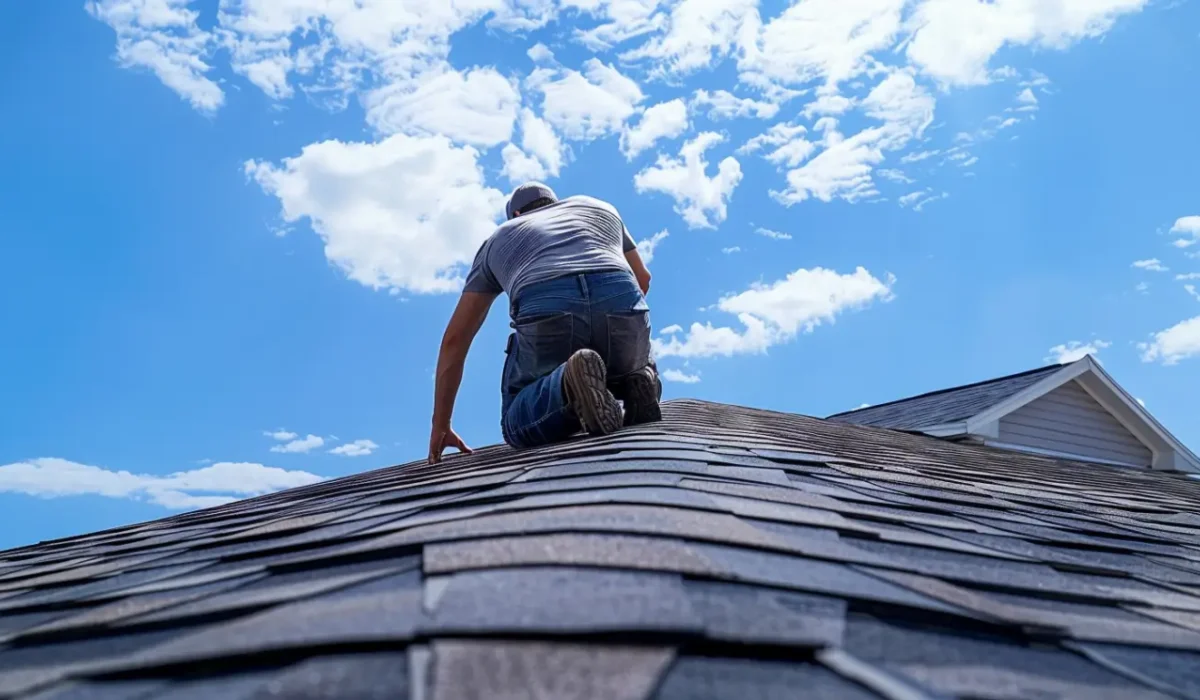Your roof works around the clock to protect your home from the elements, but it won’t last forever without proper care. While professional inspections are essential, homeowners can also perform basic checks to spot early warning signs of trouble. For residents of Grapevine, TX, where storms and hot summers put extra stress on roofing systems, a DIY inspection can help identify problems before they become costly repairs.
At KangaRoof, we encourage homeowners to stay proactive about roof maintenance. With certifications such as OC Preferred, Emerald Premium Plus, and GAF Master Elite, our work reflects industry-leading standards. We proudly install products from trusted brands like Malarkey, GAF, and OC, combining durability with craftsmanship rooted in our core values: doing the right thing with quality and passion.
Why DIY Roof Inspections Matter
Professional inspections should be scheduled regularly, but in between, homeowners can perform their own visual assessments. By catching small problems early, you’ll protect your home and save money on major repairs.
Your DIY Roof Inspection Checklist
1. Inspect Shingles
Look for curling, cracked, or missing shingles. Storms in Grapevine, TX often loosen shingles, which can quickly lead to leaks if not repaired.
2. Check Gutters and Downspouts
Clear out leaves, twigs, and shingle granules. Overflowing or clogged gutters allow water to back up onto the roof, which damages decking and fascia.
3. Examine Flashing
Review areas around chimneys, skylights, and roof vents. Flashing should sit tightly against surfaces without gaps, rust, or cracks.
4. Look for Sagging Areas
Sagging can signal structural damage caused by moisture, rot, or weakened decking. If you notice uneven spots, call a professional immediately.
5. Assess Ventilation
Check that ridge vents and soffits are clear. Proper airflow prevents heat buildup in summer and reduces moisture that leads to mold or ice-related problems in winter.
6. Inspect the Attic
Look for water stains, mold, or damp insulation. These are often the first signs of a roof leak.
7. Evaluate the Roof Perimeter
Walk around your home and check fascia, soffits, and siding near the roofline for signs of rot or water damage.
Safety Tips for DIY Inspections
- Stay on the Ground When Possible: Use binoculars to inspect roof surfaces rather than climbing.
- Avoid Slippery Surfaces: Never attempt inspections during or after rain.
- Know When to Call a Pro: If you spot significant issues, leave repairs to certified contractors.
Why Grapevine, TX Homeowners Should Be Extra Cautious
With frequent hailstorms, high winds, and scorching summers, roofs in Grapevine, TX endure significant stress. Performing routine DIY checks in spring and fall, along with after major storms, helps prevent small problems from escalating.
The Role of Professionals
While DIY inspections are helpful, nothing replaces the trained eye of a certified roofing contractor. At KangaRoof, we provide detailed inspections that identify hidden issues and deliver solutions designed to extend your roof’s life.
Conclusion
A DIY roof inspection is a simple but powerful way to safeguard your home. By following this checklist, you’ll catch early warning signs, protect your roof, and extend its lifespan. When paired with professional inspections, these efforts ensure your roof continues to perform reliably year after year.
Read also our blog: How to Remove Moss from Your Roof
